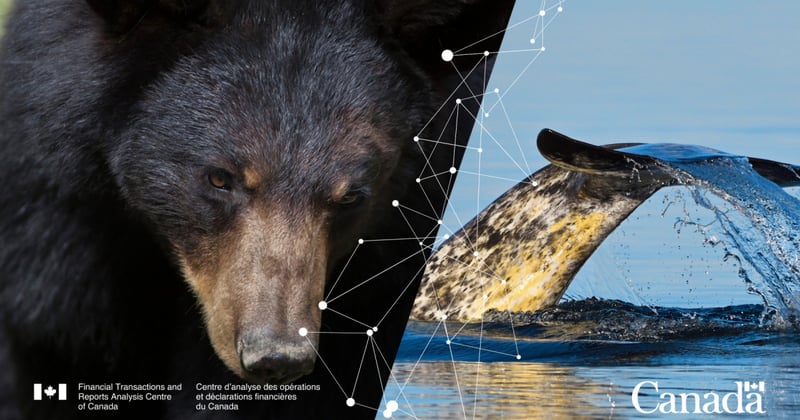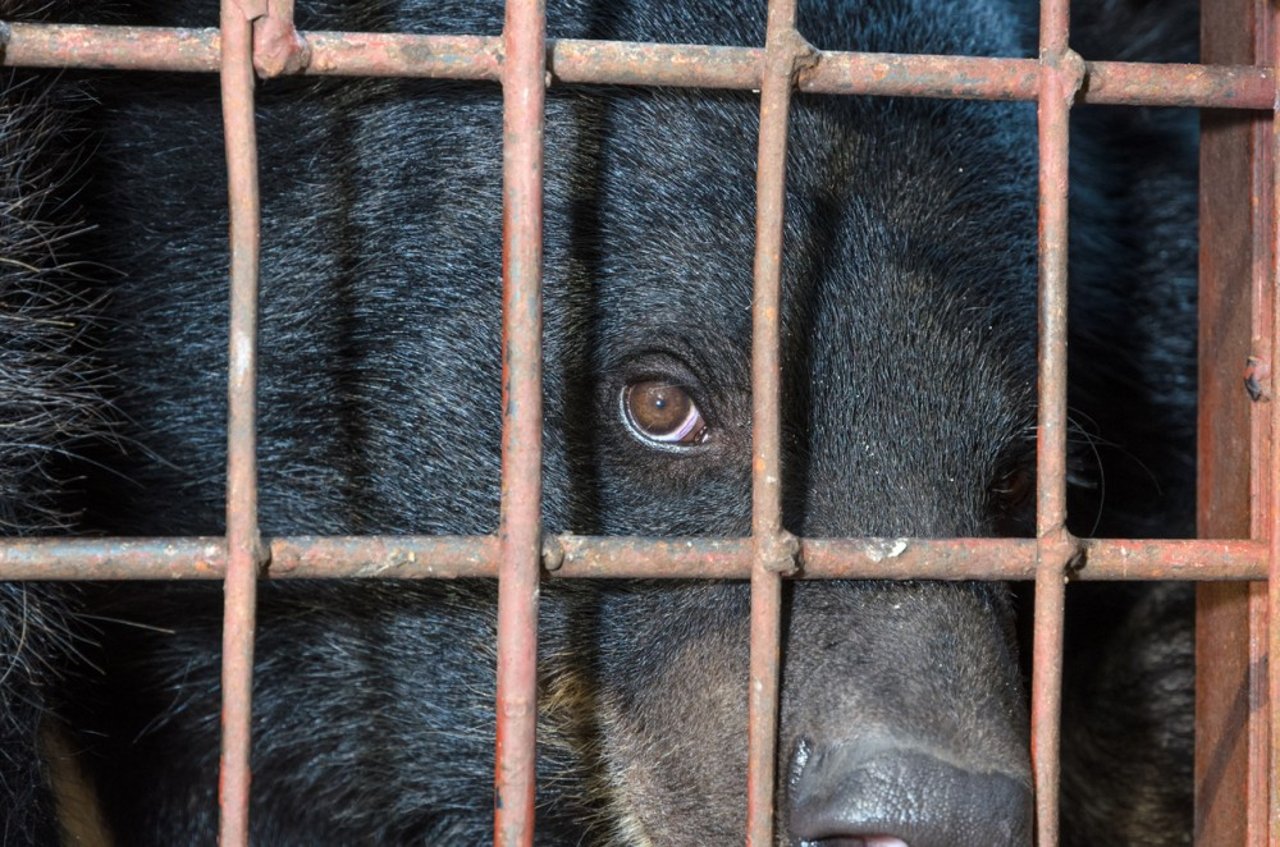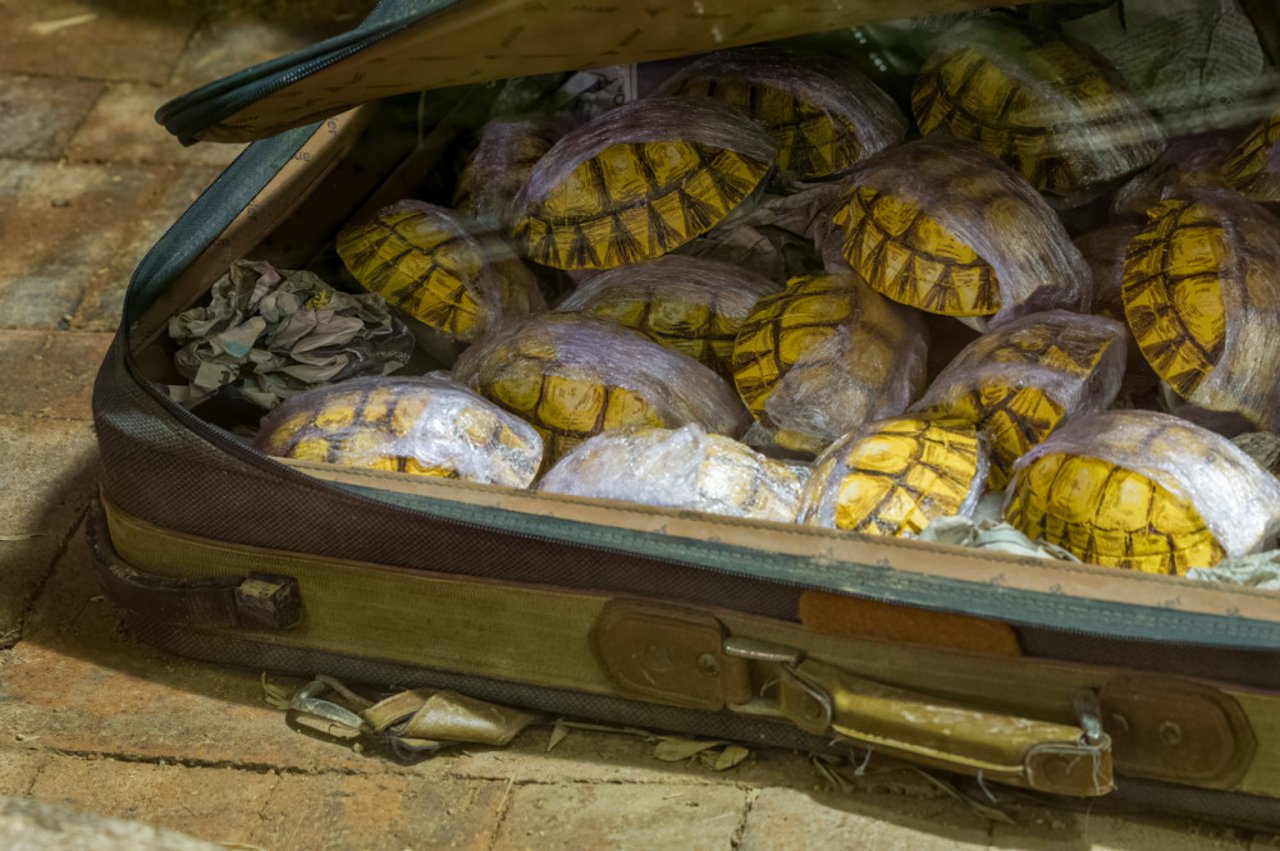
Using financial intelligence to fight the illegal wildlife trade
Blog
9 questions with Barry MacKillop, Deputy Director of Intelligence for the Financial Transactions and Reports Analysis Centre (FINTRAC).
The Financial Transactions and Reports Analysis Centre of Canada (FINTRAC) is Canada's financial intelligence unit and anti-money laundering and anti-terrorist financing supervisor. Its mandate is to facilitate the detection, prevention and deterrence of money laundering and the financing of terrorist activities. Through the international Project Anton, FINTRAC also tries to fight the illegal wildlife trade.
Recently, FINTRAC was one of seven financial intelligence units from around the world to endorse a Statement of Principles on enhanced international collaboration to fight the financial activity that fuels the illegal wildlife trade. This Statement of Principles was announced by Prince William at the United for Wildlife Global Summit in Singapore.
1. How does the illegal wildlife trade in and out of Canada fit into FINTRAC’s mandate?
FINTRAC’s mandate is to facilitate the detection, prevention and deterrence of money laundering and the financing of terrorist activities.
As a money laundering risk, the Financial Action Task Force has identified illegal wildlife trade as a major transnational organized crime, generating billions of criminal proceeds each year. With enforcement action often centered on poachers and smugglers, and ignoring other key enablers in the funding and supply chain, criminal actors find it a lucrative activity that is low-risk and high-reward.
Through our support for Project Anton, we aim to enhance awareness and understanding of the financial crime threat posed by illegal wildlife trade in Canada and target the laundering of proceeds from this appalling crime domestically and internationally.
In support of Project Anton, FINTRAC developed a new Operational Alert, Laundering the Proceeds of Crime from Illegal Wildlife Trade. Based on a strategic analysis of suspicious transaction reporting received by FINTRAC and supported by credible and compelling domestic and international research, as well as information and input from Project Anton partners, this new Operational Alert includes money laundering indicators related to suspected illegal wildlife trade.
The money laundering indicators in the Operational Alert are meant to assist businesses in identifying and reporting suspicious transactions to FINTRAC suspected of being related to illegal wildlife trade. This, in turn, will facilitate the production of actionable financial intelligence in support of law enforcement investigations in Canada and abroad.
With the reporting that FINTRAC has received to date, the Centre has already disclosed actionable financial intelligence to law enforcement under the umbrella of Project Anton.
2. How does the illegal wildlife trade fuel other forms of financial crimes?
Organized crime groups involved in wildlife crime are often involved in other domestic and internationally connected criminal activity such as human trafficking, drug trafficking, firearm trafficking and money laundering. This suggests that organized crime groups are continuing to grow their profits and power through wildlife crime.
Another key aspect of the illegal wildlife trade is the role of corruption. Corruption is one of the most important facilitators of illegal wildlife trade. Every stage in the illegal trade chain is affected, from poaching and illegal harvesting through transportation, processing and export, to sale and the laundering of proceeds.
By following the money across jurisdictions and generating actionable financial intelligence for law enforcement in Canada and around the world, Project Anton will assist in identifying, pursuing and prosecuting perpetrators – and broader networks – linked to illegal wildlife trade.
3. What can you tell us about the scale of the illegal wildlife trade in Canada and globally?
In Canada, bears are poached for their bile, claws and paws, which are subsequently sold for a large profit, especially on the traditional medicine market domestically and internationally. Other wild animals in Canada are also hunted illegally for fur and exported globally as trophies and other decorative products.
Photo: Yongkiet Jitwattanatam/Shutterstock
There are many species at risk in Canada for the illegal wildlife trade. According to Environment and Climate Change Canada, high-risk species for the Canadian illegal market include bears (particularly black, grizzly and polar bears), cougars, geese, lynx, moose, crabs, eels (elvers), lobsters, turtles, sharks and wolves.
Illegal wildlife trade not only affects Canada, but also poses a serious threat internationally. It is a major transnational organized crime, which generates approximately USD 20 billion in criminal proceeds each year. A 2020 report by the United Nations Office on Drugs and Crime highlighted that suspected illegal wildlife traffickers from 150 countries had been identified, illustrating that wildlife crime is a global issue. This demonstrates the importance of establishing a committed global network of public and private sector entities to combat this appalling crime.
4. How does the legal trade play a role when trying to detect illegal wildlife trade?
As with many sophisticated crimes, criminal actors can exploit legitimate businesses to try to obscure their illicit activity.
For example, front companies were used to launder proceeds and/or to facilitate illegal wildlife trade. Front companies in FINTRAC’s sample were diverse and included industries such as construction-related businesses, transport, and logistics among others. Front companies were owned by suspected coordinators of the illegal wildlife trade, their associates, and other members of their suspected wildlife trafficking network. These front companies were suspected of co-mingling legitimate funds with illicit funds from the illegal wildlife trade.
5. Tell us about Project Anton and your recent Operational Alert on the laundering of the proceeds of the illegal wildlife trade in Canada. What are you hoping these will accomplish?
Project Anton is named after Anton Mzimba, Head of Security at the Timbavati Private Nature Reserve and a Global Conservation Technical Advisor, who was murdered for his commitment to protecting and conserving wildlife.
This new international public-private partnership is led by Scotiabank and supported by The Royal Foundation’s United for Wildlife network, FINTRAC, AUSTRAC’s Fintel Alliance, the South African Anti-Money Laundering Integrated Task Force, the UK Financial Intelligence Unit – National Crime Agency, Western Union, Environment and Climate Change Canada, Fisheries and Oceans Canada, the Royal Canadian Mounted Police, the Canada Border Services Agency, and the Wildlife Justice Commission.
By following the money across jurisdictions and generating actionable financial intelligence for law enforcement in Canada and around the world, Project Anton will assist in identifying, pursuing and prosecuting perpetrators – and broader networks – linked to illegal wildlife trade.
Project Anton will also facilitate the ongoing engagement and sharing of information between partners domestically and internationally, where authorities permit, as well as enhance collective knowledge of money laundering methods, typologies and indicators as more information and intelligence is gathered from the reporting from businesses.
The launch of Project Anton and publication of FINTRAC’s new Operational Alert is the beginning of an effective new international collaborative effort to target and disrupt this appalling and cruel crime.
FINTRAC’s new Operational Alert, Laundering the Proceeds of Crime from Illegal Wildlife Trade, is based on a strategic analysis of approximately 200 Suspicious Transaction Reports submitted to the Centre in relation to illegal wildlife trade. It is also supported by credible and compelling domestic and international research, as well as information and input from Project Anton partners.
This Operational Alert provides Canadian businesses with up-to-date information related to new, emerging and relevant methods of laundering the proceeds related to illegal wildlife trade.
The money laundering indicators in this Operational Alert should be assessed by businesses in combination with what they know about their client and other factors surrounding the transactions to determine if there are reasonable grounds to suspect that a transaction or attempted transaction is related to the commission or attempted commission of a money laundering offence and should be reported to FINTRAC.
Photo: Rob Thorley/Shutterstock
6. What are your greatest challenges in Project Anton
With Project Anton being launched in only January 2023, the laundering of the proceeds of the illegal wildlife trade remains a relatively new area of focus for FINTRAC. As such, we have had to build up our knowledge and expertise on this topic to make sure we are able to provide law enforcement in Canada and around the world with actionable and timely financial intelligence on this topic, and ensure we were providing observable, analytically sound indicators of the laundering of the illegal wildlife trade to our reporting entities in the financial sector.
This is where our public-private partnership has been so critical. Thanks to the community of practice we have brought together from around the world including our fellow financial intelligence units, law enforcement, private sector reporting entities, and civil society we have been able to very quickly build a strong knowledge base on what the financial activity associated to the illegal wildlife trade looks like.
In fact, FINTRAC, together with other international financial intelligence units, such as AUSTRAC in Australia, FIU Netherlands, the Financial Intelligence Center in South Africa, the Suspicious Transaction Reporting Office in Singapore, and TRAFFIC, a non-governmental organization monitoring the trade of wild animals and plants, have developed a toolkit on the laundering of the proceeds from the illegal wildlife trade. It includes established money laundering indicators relevant to this heinous crime, keywords relevant to illegal wildlife trade transactions (including keywords relevant to the online sale of illegal wildlife products in 21 different languages), and publications from reputable sources regarding the financing of the illegal wildlife trade. This toolkit will improve the detection and analysis capabilities of financial intelligence units around the world committed to combatting the laundering of the proceeds of crime from the illegal wildlife trade.
7. What does your team look for in the data to identify potential illegal wildlife traders?
As outlined in the Operational Alert we published in support of our participation in Project Anton, FINTRAC has produced a number of indicators identifiable in financial transactions that could suggest possible involvement of an individual or entity in the laundering of proceeds of the illegal wildlife trade. We’ve broken these indicators into three categories: the general wildlife trade, imports into Canada, and exports from Canada.
While we are generally looking for a constellation of indicators when reviewing transaction data, some particularly strong ones are transaction details that make reference to species or animal parts of concern for illegal wildlife trade, particularly endangered species, payments made to individuals and/or entities involved in an animal-related business, like an aquarium, zoo, veterinary clinic that are inconsistent with that client’s profile, and frequent unexplained transfers to individuals and/or entities located in jurisdictions of concern for wildlife crime, which could include China, Hong Kong, Australia, and Sub-Saharan Africa.
8. Once your team observes potentially illegal activity related to the wildlife trade, what happens next?
When the Centre has reasonable grounds to suspect that financial intelligence would be relevant to investigating or prosecuting a money laundering offence or a terrorist activity financing offence, FINTRAC generates a financial intelligence disclosure for Canada’s police, law enforcement and national security agencies. The Centre is also able to disclose financial intelligence to financial intelligence units worldwide when appropriate thresholds are met.
In 2022–23, FINTRAC provided 2,085 disclosures – including 225 disclosure packages to foreign financial intelligence units – of actionable financial intelligence in support of investigations related to money laundering, terrorist activity financing and threats to the security of Canada. Since becoming operational in 2001, FINTRAC has provided more than 22,000 financial intelligence disclosures to Canada's police, law enforcement and national security agencies.
Often based on hundreds or even thousands of financial transactions, a financial intelligence disclosure may show links between individuals and businesses that have not been identified in an investigation, and may help investigators refine the scope of their cases or shift their sights to different targets. A disclosure can pertain to an individual or a wider criminal network, and can also be used by police and law enforcement to put together affidavits to obtain search warrants and production orders.
Since the launch of Project Anton, FINTRAC has received an increased volume of financial transaction reporting on suspected money laundering associated with the illegal wildlife trade from a variety of businesses. This has led to over 30 disclosures of actionable financial intelligence to Canadian law enforcement agencies and international financial intelligence units.
9. What can people do to help with your work to protect animals?
- Anyone can submit information to FINTRAC about suspicions of money laundering and terrorist financing through our secure web form; that would of course include any individual or business that might be profiting from the illegal wildlife trade.
- For businesses subject to the Proceeds of Crime (Money Laundering) and Terrorist Financing Act, it’s very important to remain up-to-date with legal obligations that support Canada’s broader Anti-Money Laundering and Anti-Terrorist Financing Regime. Specific to Project Anton, it’s crucial to be aware of the money laundering indicators included in FINTRAC’s Operational Alert and make use of those when considering filing a suspicious transaction report.
- If you know about illegal activities that threaten wildlife and the environment, you should also consider reporting it to Environment and Climate Change Canada’s Wildlife Enforcement Directorate or Fisheries and Oceans Canada.
About Barry MacKillop
Mr. MacKillop is the Deputy Director of Intelligence at the Financial Transactions and Reports Analysis Centre of Canada (FINTRAC) responsible for Tactical Financial Intelligence, as well as Targeted Strategic Financial Intelligence. Mr. MacKillop also has extensive experience in developing and implementing anti-money laundering and anti-terrorist financing Compliance programs and policies.
Prior to this, Mr. MacKillop worked at Public Safety Canada where he held various senior positions over nine years, including: Director General of Law Enforcement, Organized Crime and Border Strategies; Senior Director of National Strategies (Serious and Organized Crime); and Director of Summit Security, Contract Policing and Firearms Policy.
Mr. MacKillop began his career in the non-profit sector with the Youth Services Bureau of Ottawa and has also held positions in other federal government organizations, including both the Privy Council Office and Treasury Board of Canada Secretariat. Mr. MacKillop holds a Master of Arts Degree in Criminology from the University of Ottawa.

